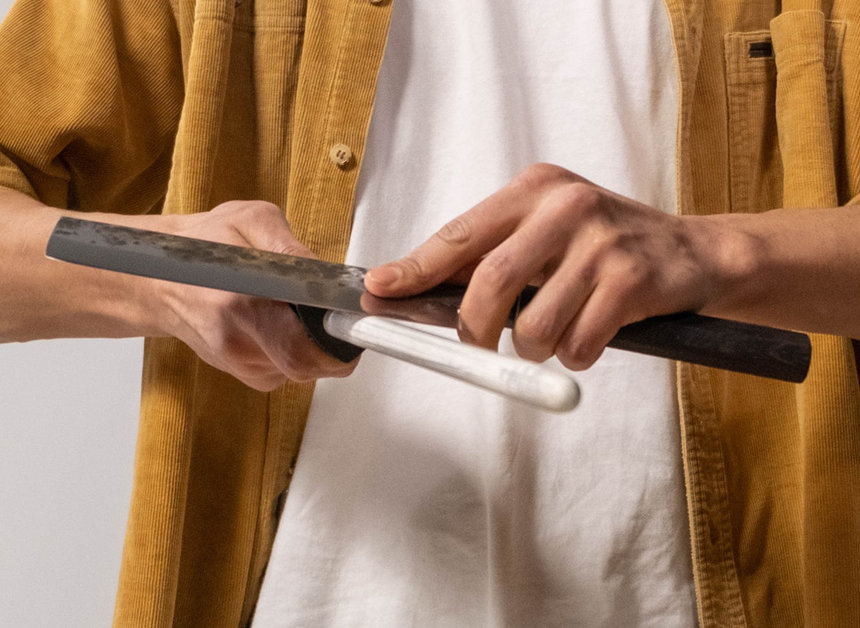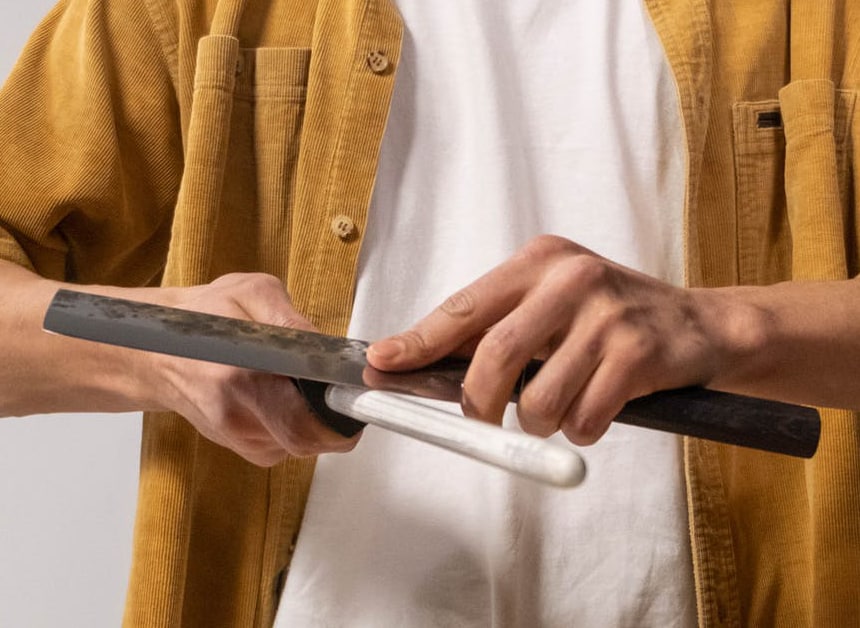
Like anything else, with daily usage kitchen knives are going to start to show signs of wear and tear.
Luckily, though, a quality knife sharpener can bring that edge right back to better than brand-new condition.
But do knife sharpeners themselves wear out? Do they have a finite lifecycle? How do you know if your knife sharpener is helping or hurting?
You should expect a quality knife sharpener to last anywhere between 5 years and 10 years. Depending on the type of sharpener you have and how well you maintain it.
Can a Knife Sharpener Get Dull?
Yes, believe it or not, a knife sharpener can “get dull”.
Knife sharpeners are different than a honing steel. A honing steel never really loses its luster, but that’s because it’s only used to bend back the sharpened edges of a knife. It doesn’t sharpen so much as straighten a knife out.
Knife sharpeners, the other hand, use abrasive services and materials to remove metal from your knife – but also lose material themselves in the transaction. It takes a while for a knife sharpener to go dull and to quit working the way it should, but it does happen for time.
How Long Do Sharpening Steels Last?
Sharpening steels remove tiny layers of your blade edge to expose a new – and razor-sharp edge for you to work with in the kitchen.
Most of these tools are impregnated with a diamond material to more efficiently and effectively cut through different types of kitchen knife metal. Sometimes you’ll find these tools to be impregnated with ceramic material to do the same job (usually at a lower price point).
It’s a safe bet to expect a sharpening steel to give you anywhere between 5 and 10 years of regular usage without any signs of wearing out for coming apart at the seams.
Some sharpening steel options (most of the diamond impregnated ones, anyway) can give you twice as much utility – and sometimes much longer than that.
A lot of this has to do with the fact that you’re not going to be sharpening your knife with a sharpening steel all that often. This is the kind of project you’ll want to tackle every six months or so (maybe every three months if your knives are getting a heavy workout).
How to Rejuvenate a Sharpening Steel
It’s important to keep your sharpening steel in tiptop condition if you’re going to maximize its utility, though.
This means cleaning your sharpening steel on a regular basis, maintaining it consistently, and making sure that you are storing it correctly as well.
Truth be told, there’s not a whole lot that needs to be done to “rejuvenate” a sharpening steel.
All you really need to do is rinse the steel after you’re done using it in warm water, maybe scrub down with a little bit of dish soap, and then wipe the steel with a dry sponge.
Stick it in the drawer (wrapping it in a clean dishtowel if you want to go to the next level with storage) until you need it next.
How Long Do Ceramic Sharpening Rods Last?
Some sharpening steel rods have been impregnated with ceramic material.
Don’t be fooled into thinking that ceramic steel rods aren’t as a capable or as durable as diamond options. Nothing could be further from the truth – so long as they are properly cared for.
You see, the special ceramic material used in these steels practically guarantees a lifelong (and then some) level of durability. The ceramic is super hard, hard enough to give you a clean and consistent edge on all of your knives. But it is a little bit brittle, far more brittle than diamond in fact.
This is why you have to sort of baby your ceramic steel sharpening rods. If you do, though, they could last you an entire lifetime.
How Long Do Whetstones Last?
Whetstones are a bit of an “old-school” approach to getting your kitchen knives nice and sharp, but they work really well if you know how to use them.
Different stones are made from different materials, all of which are designed to work with different steels better than other options. You’ll also want to be sure that you choose a “grit” level that can give you the edge you are after – one that is plenty abrasive to realign your blade but not so much that you chew through all of your surface material at the same time.
Whetstones have lifecycles that can vary anywhere between a couple of months to a couple of decades and everything in between.
Longevity really comes down to how you care for the stone, whether or not you get it wet or lubricate it before you use it (hugely important), and how the stone is cared for in general.
If a whetstones fractures or hollows out you might have to either “flatten” the stone using machinery or replace it completely.
How Long Do Diamond Knife Sharpeners Last?
Diamond knife sharpeners are generally going to be able to give you anywhere between five and 15 years of utility without much headache and without much hassle.
Diamond is (no surprise) rock hard and not nearly as brittle as ceramic. These steel sharpening solutions can be bumped around and beat up a little more than ceramic can without showing signs of wear and tear.
Diamond does wear out, though – and will wear out faster with extended usage.
Make sure that you’re checking your diamond sharpening tools every five years or so to figure out when the best time to swap them out is. As soon as you start to really have to work to hone your edge the odds are pretty good you need some new equipment.
How Long Do Pull Through Sharpeners Last?
Pull through sharpeners are often made of ceramic materials or low-grade steel and are really just designed for “quick touchups”. They generally do a better job of honing your knife blade than sharpening it, too.
Your average pull through sharpener – we are talking about one that’s going to set you back $10-$20 or so – isn’t going to last you very long. You might get 12 months out of it, you might get a little longer.
Stick to more reliable, more robust, and (often) more expensive options if you’re serious about keeping your knives sharp.
When to Replace a Knife Sharpener
Truth be told, the best time to replace a knife sharpener is when it begins to “misbehave”.
Maybe that means you have to struggle to get your edge straight and razor-sharp again.
Maybe that means all of a sudden you’re getting bumps and dull spots along the edge of your blade instead of a consistent sharp cut.
Maybe it means that you see obvious signs of wear and tear under your sharpener and just aren’t as confident in using it any longer.
At the end of the day, it’s never a bad idea to do a quick swap out for new equipment and get that edge back to better than brand-new condition. Even the best knife sharpeners on the planet aren’t going to break your bank!

